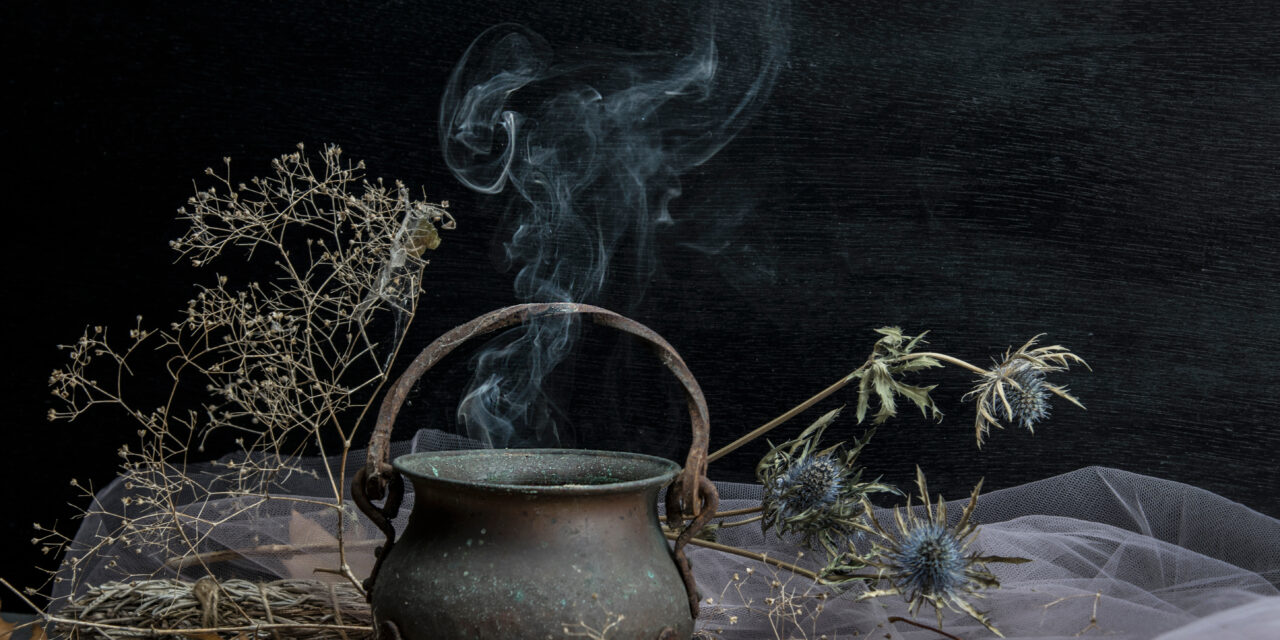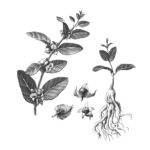Often to find the right inner balance we need the help of calming plants and herbs. The greatest support comes from Nature so we do not get lost in the frenetic folds of our daily lives. Now take a few moments for yourself, sit back, sip some light tea, and get ready to read this new article.
Floriculture
The word floriculture defines the art of growing flowers or plants for pleasure, ornamentation, or commerce.
The shape of flowers, their bright colors, the beauty of the petals, and the scent they release have always exercised great attraction on humans. For this reason, floriculture has been practiced since ancient times, to the point of becoming a subject around which various scientific treatises have been developed. A clear example of these treatises is certainly the one concerning the sweet pea plant, written by the Czechoslovakian friar Gregor Mendel. From the simple flower, his study has expanded to reach the open field of genetics.
With the passing of the centuries, and the consequent introduction of exotic plants originating from regions with very different climates, floriculture had to expand and refine its cultivation methods. The denaturalization of flowers from their original habitat has allowed the development of a vast new trade. A trade that has allowed the spread of plants on a large scale, allowing man to take advantage of their benefits in different corners of the planet. A trade which, however, has not been kind to our climate, demonstrating how often what seems done for a good purpose can turn out to be harmful.
Calming herbs and plants
In previous articles, we have already discovered several plants that can help ease our nervous system, promoting relaxation of the body. So let’s add some new knowledge about the traditional, mystical, and therapeutic use of some of the most effective soothing herbs.
Ashwagandha or Indian ginseng
Its scientific name is Whitania somnifera, while the term ashwagandha refers to the scent of the root and means horse smell.
It is a popular herb of Ayurvedic tradition and naturopathy. Ancient Indian scriptures say it is a miraculous plant. The active ingredients of its root have a relaxing, aphrodisiac effect and help reduce stress. Furthermore, it is said to have a positive effect on sleep, which is why it is also known as sleep berry or winter cherry. It is ideal to take it in the form of an infusion.
It belongs to the same family as nightshade, and due to its slightly toxic ingredients, it is not suitable for raw consumption. The ashwagandha root is tuberous and fleshy, yellow-ochre on the outside and white on the inside.
Cocoa
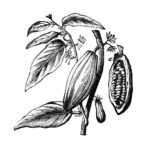
Zweig und Frucht des Cacaobaumes
aus: Marie Adenfeller, Friedrich Werner: Illustriertes Koch- und Haushaltungsbuch, Friedrichshagen 1899/1900, S. 119, Fig. 184
The Mayans and Aztecs believed that the cocoa fruit had magical powers, and used it in religious rites and healing ceremonies. The Spirit of the Cocoa plant is one of the most powerful deities of Mayan cosmology, called Ku-Ku which means Sacred above the sacred. Cocoa was considered a gift from the gods and only those who were high on the social ladder could drink it. The Aztecs knew that cocoa eliminated tiredness and stimulated mental abilities; it was a source of spiritual wisdom, bodily energy, and sexual potency.
There are different varieties of cocoa classified into three main botanical groups:
- Criollo: the Creole variety that retains most of the properties of the wild plant.
- Forastero: the foreign variety used for large mass production, which has lost much of its medicinal properties.
- Trinidad: the hybrid between the Creole and foreign varieties.
For ceremonial use, the organically grown criollo variety is used, produced by the indigenous cultures of some South American peoples, such as Ecuador and Guatemala. The purpose of the Mayan Cocoa Ceremony is to create a sacred space to come into contact with the spirit of the plant which will guide them on a profound inner journey.
Cocoa, in addition to being very tasty, reduces blood pressure and the risk of heart attack and stroke, promotes mental well-being and inner calm, is a great antioxidant and natural anti-depressant, and has anti-tumor activities. It is always recommended to consume a small amount per day (mixed with water spread on bread, or sprinkled on yogurt), or to eat a small piece of dark chocolate instead.
Mallow
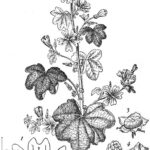
Mallow (Malva sylvestris) AnonymousUnknown author, Public domain, via Wikimedia Commons
Mallow has been appreciated since ancient times for its emollient properties. The name mallow in fact derives from the Latin term mollire meaning capable of softening. The philosophers of the Pythagorean school considered it sacred as a messenger of the meeting between celestial and earthly things. It was also considered a magical protective plant: it was buried near the stables to protect the livestock; its roots wrapped in black cloth were used as a protective talisman. During the Renaissance, it became the remedy for all ills and for this reason, it was defined as omnimorbia.
It grows spontaneously in uncultivated land, in gardens, and along river banks. It is now established as one of the natural remedies par excellence, a friend of our health, our organism, and the beauty of the body. An herbal tea or an infusion of mallow is excellent for relieving heartburn, gastritis, or insomnia. Folk medicine uses both mallow flowers and leaves to treat wounds.
Rhodiola
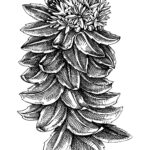
Rhodiola. Adaptogenic plant botanical sketch. Hand-sketched Rhodiola illustration. Great for traditional medicine, cosmetology, Ayurveda, and clinical research design. Natural adaptogen drawing
Originally from Siberia, it is also widespread in Mongolia and also grows spontaneously in the mountains of Northern Europe, in Lapland, Scandinavia, and Alaska.
In Siberia, it was used to protect against low winter temperatures. Furthermore, there was a popular belief that anyone who drank its infusion every day would live for more than a century. Rhodiola rosea root was given as a gift to newlyweds to promote the good health of unborn children.
The Vikings took it as an invigorator after intense physical exertion. In Ukraine, it was also often used as the main ingredient for love potions.
It is an excellent anti-stress: it helps to recover from states of physical and mental exhaustion due to intense and nervous periods of life. Rhodiola works against anxiety and depression, however taken in high doses it can cause insomnia and irritability. It is better not to give it to children and avoid its use during pregnancy and breastfeeding.
What strengthens us
Taking care of ourselves, and responding to the requests and needs of our body, is the most positive thing we can do to maintain serenity, inside and out. As we have already seen several times, flowers can be great allies in this, thanks to their natural beauty, as well as thanks to their medicinal properties.
They strengthen us and make us more aware. And precisely for this reason it is necessary not to abuse it, not to take advantage of the Nature that surrounds us, but to accompany ourselves with it.

